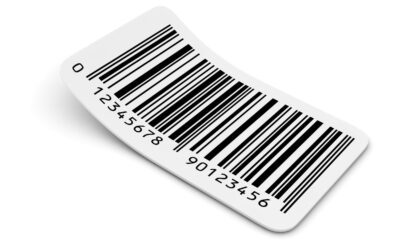A one-line answer would be: Yes, you can track everything with asset tracking software! Surprised? Let us tell you how.
Well, it’s not that you’ll even be tracking how many sticky notes you and your colleagues use per week. Unless that is exactly what you want to track! But yes, itemit’s asset tracking software will help you track anything and everything you want to keep logs on.
But the important question here is, what do you need to track and why? It is always better to define your goals.
You might be looking for asset tracking software to keep a close eye on your fixed assets for better audits. Or you might want an IT asset management system that can track each IT device in the office. Whatever your ultimate goal may be, itemit will prove instrumental for your asset tracking needs.
How To Track Everything with Asset Tracking Software
It all starts with adding an asset and making a simple asset profile. When you open the itemit asset tracking software, you can see three buttons in front of you on the home screen, Scan, Search and Add.
If you tap the ‘Add’ option, we take you to the ‘Add Item’ page where you can enter the name and description of the asset you want to track.
Next, add a description for the item. An important note, perhaps, that you’d want everyone to read when they come across this asset. itemit automatically generates a unique serial number for every new asset added. If you choose to, you can also edit the serial number.
You can save this information to officially add the new asset profile to the asset register, or you can add additional data like a profile picture, location, assignee, or tag the asset before saving.
Theoretically, this could be anything. You could add a laptop, a keyboard, a wifi router, or even your pencil. But before you get up and start adding all your stationery to the asset tracking software, you might want to remind yourself of your ultimate asset tracking goal to understand what to add to your asset register.
Most enterprises or individuals would use asset tracking software for the following purposes:
- Fixed Asset Tracking
- IT Asset Management
- Tools and Equipment Tracking
- High-value Collection Audits
- Personal Use
So let’s talk about the following and how itemit’s asset tracking software helps you do it all.
Tracking Fixed Assets
Fixed assets are things of value that you or your company owns and intends to use for more than a year. This simple definition tends to clear up a lot of confusion on what should and should not be tracked in a fixed asset register.
Of course, this rules out temporary assets that won’t be used for more than a year. Stationery or edibles, for example. But it does include things like buildings, land, and digital assets like purchased software. An asset tracking software lets you create asset profiles and track all such assets.
The purpose of a fixed asset register is to provide better accuracy when auditing your businesses’ assets and also to keep them well-maintained and maximise ROI. So tracking whatever item fulfils that goal, should be tracked.
Tracking IT Assets
Typically, every device that is a computer or can be connected in any way to a computer qualifies to be an IT asset. This includes laptops, desktops, servers, screens, mice, keyboards, smartphones, tablets, scanners, printers, projectors and even Wi-Fi routers.
This list can go forever, so the definition we mentioned at the beginning of this section will help you better decide what items to add to your IT asset register. If you’re tracking your IT assets for GDPR compliance, see what you need to track to be compliant.
To answer the primary question, yes, you can track every IT asset with itemit quite effortlessly.
Tools and Equipment Tracking
In this case, deciding what to track would be pretty straightforward. All tools and equipment that you use for your day-to-day work should be tracked.
It depends on how granular you want to be. You can track each and every spanner and screwdriver if you want. Or you can resort to tracking toolkits rather than individual tools if that serves you better.
High-value Collection Audits
Be it valuable paintings, historical relics or bottles of wine. You can track your high-value asset collections with itemit and can keep an eye on them even from remote locations.
You can also use RFID asset tracking to track asset locations automatically for assets you don’t want to track with a visible QR code tag.
Personal Use
When it comes to personal use, you can discover the true meaning of being able to track everything with asset tracking software. You can use it as your free household inventory app to track everything from collectables, stuff when moving your home or even your wardrobe.
You can track the watering schedule for your house plants, or keep a record of your precious teacups, you name it.
Conclusion
Inarguably, one of the best things about itemit is its extreme scalability. Can you imagine that all of the asset tracking purposes we’ve talked about above can be implemented from a single app?
It’s hard to believe but it’s true. Check out for yourself by taking a free 14-day trial by filling in the form below. You can also reach out to us at team@itemit.com if you’ve got any questions.

Try itemit
Choose a better way to track
your assets.
Start your free 14-day trial now!

Keep Learning
itemit Blog
Tips, guides, industry best practices, and news.
What Is Active RFID? A Complete Guide to Smart RFID Tags
Discover what Active RFID is, how active tags function, and the key benefits and use cases that make this technology essential for modern tracking systems.
Everything You Need to Know About 2D Barcodes
Discover everything about 2D barcodes, including how they work, their benefits, and how they are revolutionizing industries and improving business operations
Complete Guide to Asset Lifecycle Management and Its Benefits
Learn about asset lifecycle management and how it helps businesses optimize asset usage, reduce costs, and improve efficiency throughout the asset’s life.



